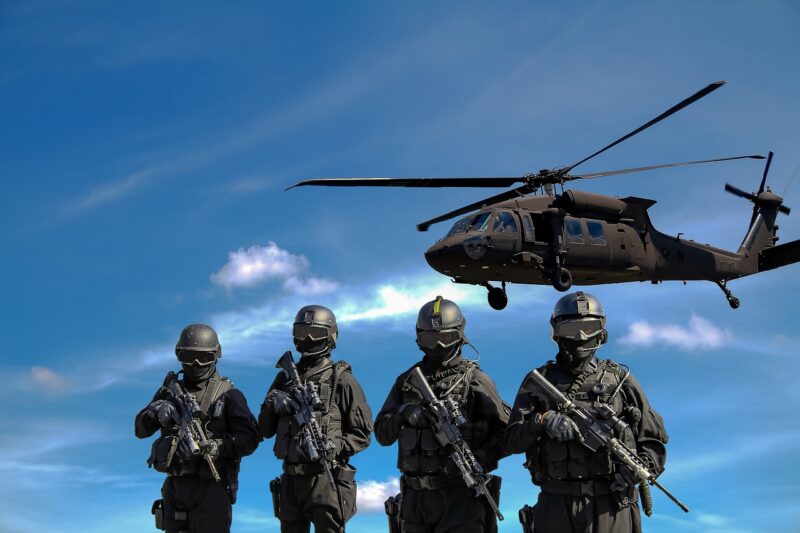The World’s Most Advanced Military Weapons and What Makes Them So Powerful
November 14, 2024

Military technology has evolved significantly over the past century. From the advent of gunpowder to the development of smart weapons, the evolution of military hardware reflects advancements in science and technology. In this article, we will explore some of the world’s most advanced military weapons and discuss what makes them powerful. Additionally, we will examine their impact on modern warfare and global security.
1. Introduction to Military Weapons Technology
Military weapons are designed to aid in the defense of a nation and defeat its adversaries. As geopolitical tensions rise, countries invest heavily in military technology to maintain a strategic advantage. The ongoing arms race has led to the development of sophisticated weapons systems that can engage targets with precision and effectiveness.
• Innovation in Military Technology: Military weapons technology has consistently pushed the boundaries of engineering, incorporating advanced materials, varying forms of energy, and innovative designs.
• Global Context of Military Power: In the global arena, military strength is often equated with technological superiority. Nations seek the most advanced weapons to secure their interests and sustain their sovereignty.
2. The Most Advanced Military Weapons
The following is a list of some of the most advanced military weapons currently in use or under development around the world:
2.1. F-35 Lightning II
The F-35 Lightning II is a multi-role stealth fighter jet developed by Lockheed Martin. The F-35 has three variants designed for different branches of the military:
• F-35A: Conventional takeoff and landing variant for the Air Force.
• F-35B: Short takeoff and vertical landing variant for the Marine Corps.
• F-35C: Carrier-based variant for the Navy.
The F-35’s advanced stealth capabilities allow it to evade detection from enemy radar, while its sensor fusion technology provides pilots with unparalleled situational awareness.
2.2. Chengdu J-20
The Chengdu J-20 is a stealth fighter jet developed by China. As one of the most advanced military aircraft in the People’s Liberation Army Air Force (PLAAF), the J-20 is notable for its:
• Stealth Design: Its airframe is designed with stealth features to reduce its radar cross-section.
• Supercruise Capability: The J-20 can fly at supersonic speeds without the need for afterburners, which enhances its range and combat effectiveness.
The J-20 represents China’s ambition to compete with the United States in terms of aerial combat technology.
2.3. Hypersonic Weapons
Hypersonic weapons are designed to travel at speeds exceeding Mach 5 (five times the speed of sound). They can be classified into two categories:
• Hypersonic Glide Vehicles (HGVs): These are released from a rocket and glide at high speeds towards their target.
• Hypersonic Cruise Missiles: These travel at sustained hypersonic speeds using advanced propulsion systems.
Countries such as Russia, China, and the United States are heavily investing in hypersonic technology. These weapons pose a significant threat to traditional missile defense systems due to their speed, maneuverability, and ability to evade tracking.
2.4. M1 Abrams Tank
The M1 Abrams is a third-generation main battle tank used by the United States and several allied nations. It boasts advanced features such as:
• Composite Armor: The tank is equipped with layers of armor built from advanced materials that provide superior protection against projectile impacts.
• 120mm Smoothbore Gun: The cannon fires various types of munitions, including armor-piercing rounds, allowing it to engage a range of targets.
The M1 Abrams remains a formidable force on the battlefield, known for its firepower and protection.
2.5. Naval Drones
Naval drones are becoming increasingly integrated into modern naval operations. These unmanned systems can operate above and below the waterline:
• Surface Drones: Deployed for surveillance, reconnaissance, and anti-submarine warfare.
• Underwater Drones: Used for intelligence, surveillance, and mine countermeasures.
Naval drones can provide intelligence without risking human lives and are essential for modern maritime tactics.
3. What Makes These Weapons Powerful?
The power of these military weapons can be attributed to several key factors:
3.1. Technological Innovations
The incorporation of cutting-edge technologies (e.g., artificial intelligence, advanced sensors, and enhanced materials) enhances the capability and effectiveness of modern weapons.
3.2. Precision and Accuracy
Modern weapons are designed to strike targets with high accuracy, minimizing collateral damage and increasing efficiency on the battlefield.
3.3. Speed and Maneuverability
Many advanced weapons systems, such as hypersonic missiles and stealth fighters, have superior speed and maneuverability, allowing them to evade detection and interception effectively.
3.4. Integration and Networking
Advanced military weapons often operate within a cohesive network, enhancing situational awareness for military personnel and facilitating coordinated operations across multiple platforms.
4. The Future of Military Weapons
As technology continues to advance, the future of military weapons will likely involve even more sophisticated systems:
• Artificial Intelligence in Warfare: AI will increasingly play a role in target recognition, threat assessment, and autonomous operations.
• Energy Weapons: Technologies such as laser systems could offer precise targeting options with minimal collateral damage.
• Cyber Warfare Capabilities: As cyber threats become prevalent, military systems will need to integrate robust cybersecurity measures.
5. Conclusion
The development of advanced military weapons significantly impacts national security and global power dynamics. Understanding these weapons and their capabilities is crucial for assessing modern warfare’s complexity. As nations continue to innovate and adapt to emerging threats, the landscape of military technology will continue to evolve, challenging the boundaries of strategic defense and deterrence.
In conclusion, the world’s most advanced military weapons reflect a fascinating interplay of technology, strategy, and innovation. From stealth aircraft to hypersonic missiles, these systems represent nations’ efforts to secure their interests and navigate an increasingly complex global security environment.







